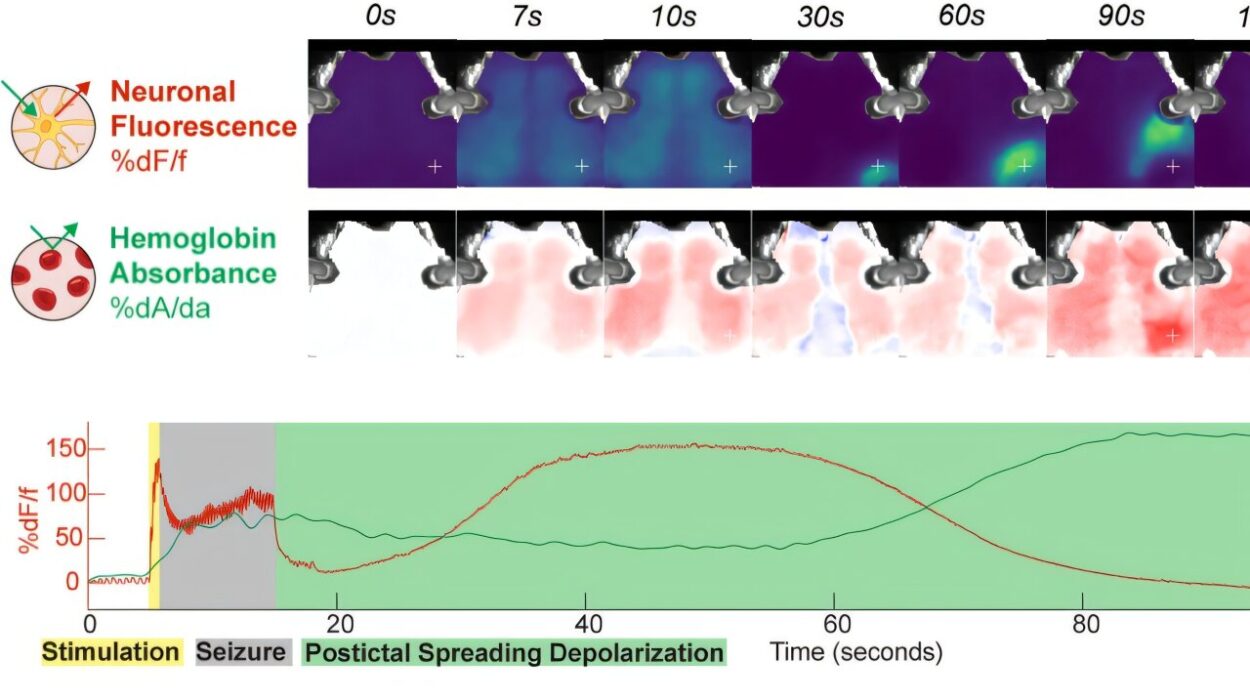For decades, a diagnosis of advanced liver cancer felt like a sentence more than a diagnosis—a terminal verdict delivered with few avenues for reprieve. By the time liver tumors were large, often inoperable and deeply embedded in sensitive vascular landscapes, options dwindled to palliative care. Surgery, the gold standard for cure, was out of reach for most. Chemotherapy and conventional radiotherapy offered only modest gains, if any, and often at the cost of debilitating side effects. Immunotherapy, a promising frontier in many cancers, had yet to unlock the fortress of hepatocellular carcinoma (HCC), the most common form of primary liver cancer.
But in a quiet research ward in Hong Kong, a different story was unfolding—one that rewrote what was possible for patients once deemed incurable. An interdisciplinary team at the University of Hong Kong’s LKS Faculty of Medicine (HKUMed) has forged a new path, marrying locoregional therapy with immunotherapy in a hybrid strategy now known as LRT-IO. In the largest study of its kind, the researchers showed that this approach can induce complete remission in nearly half of patients with advanced, unresectable liver cancer—and, in some cases, without ever lifting a scalpel.
Their findings, recently published in JAMA Oncology, offer more than statistical significance—they offer renewed hope and a potential paradigm shift in how we understand and treat one of the deadliest cancers worldwide.
Reimagining the Battle Plan
The LRT-IO approach is not a singular magic bullet. It is, rather, a carefully choreographed sequence of therapeutic maneuvers, each amplifying the next. Locoregional therapy—specifically stereotactic body radiotherapy (SBRT) and, in some cases, transarterial chemoembolization (TACE)—delivers precision strikes directly to the tumor, weakening its defenses. This is followed by systemic immunotherapy (IO), which unleashes the body’s immune system to finish the job, targeting microscopic tumor cells that may have escaped the initial assault.
The idea of combining local and systemic therapies is not new in oncology. But what distinguishes this particular strategy is its ability to convert liver tumors that were once surgically untouchable into lesions that are either completely destroyed or reduced to such an extent that surgery becomes feasible.
Professor Albert Chan Chi-yan, the Clinical Professor and Li Shu Fan Medical Foundation Professor in Surgery, and Dr. Chiang Chi-leung, Clinical Assistant Professor in Clinical Oncology, both from HKUMed’s School of Clinical Medicine, have spent years refining this approach. Their collaborative vision bridges disciplines—surgery, oncology, radiology, and immunology—to forge a treatment pathway that had previously not existed.
A Study Measured in Lives
To test the long-term effectiveness of LRT-IO, the team tracked 63 patients with locally advanced, unresectable liver tumors between January 2018 and December 2022. These were not borderline cases; the median tumor size was a daunting 10 centimeters, with many tumors occupying sensitive anatomical areas. The typical patient had few, if any, options left. This was medicine at its most urgent.
And yet, the outcomes surprised even the researchers. Nearly half of the patients—29 of the 63—achieved what is known as a “complete response” (CR), defined as the total disappearance of the tumor on imaging scans such as MRI or CT. The results were not just impressive—they were durable. At the three-year follow-up mark, 76% of those who had achieved a complete response were still alive, compared to only 28% among those who had not. And among those who did relapse, a majority were now candidates for potentially curative surgery.
Even more remarkably, some patients never needed surgery at all. The cancer simply vanished.
“This is the first study that provides long-term evidence that our strategy is not just effective in the short term, but sustainable over years,” said Dr. Chiang. “What we’re seeing is a potential pathway to cure—without surgery—for a cancer that was once universally considered incurable at this stage.”
Radiotherapy, Reimagined
One of the linchpins of the LRT-IO strategy is stereotactic body radiotherapy (SBRT), a technology that allows clinicians to aim highly concentrated doses of radiation with millimeter-level precision. Unlike conventional radiotherapy, which is spread over weeks and may damage healthy tissue, SBRT can deliver its payload in just a few sessions while sparing surrounding liver tissue.
SBRT’s role in this protocol is not merely cytotoxic. It does kill cancer cells, but more importantly, it transforms the tumor into an immunogenic battlefield. Dying cancer cells release a flood of antigens—molecular fingerprints that alert the immune system. These antigens become targets for the immunotherapy that follows, allowing the body’s T cells to recognize and destroy not only the primary tumor but potentially metastatic cells as well.
“The radiotherapy component is not just about reducing tumor size,” Professor Chan explained. “It’s about reprogramming the tumor microenvironment and teaching the immune system what to look for.”
This principle—turning the tumor into its own vaccine—is a burgeoning field known as in situ vaccination, and LRT-IO may be one of its most successful clinical translations to date.
Immunotherapy’s Second Act
Immunotherapy has transformed treatment for cancers like melanoma and lung cancer, but its impact on liver cancer has been slower to materialize. The liver, with its role in detoxification and immune regulation, is inherently a “tolerant” organ. It resists inflammation and suppresses immune overreactions, making it a difficult environment for immunotherapy to penetrate.
But when primed with radiotherapy, the rules change. The immune “cold” tumor becomes a “hot” one, marked by inflammation, cellular debris, and activated immune pathways. This is where immune checkpoint inhibitors—drugs like nivolumab and pembrolizumab—find fertile ground. These agents release the brakes on T cells, allowing them to attack cancer cells more aggressively.
In the LRT-IO regimen, immunotherapy does not play second fiddle. It is the closer—the final act that seals the fate of residual disease. This synergy between SBRT and IO may explain the unusually high complete response rates seen in the HKUMed study.
Beyond Tumor Metrics: Real Lives, Real Choices
The clinical impact of these findings goes beyond percentages. For patients and their families, a complete response means more than just time—it means quality of life, preserved liver function, and freedom from invasive surgery.
It also opens the door to what Dr. Chiang refers to as the “watch-and-wait” strategy. Traditionally, a tumor response—even a complete one—was met with surgery, just to be sure. But for elderly patients, those with multiple comorbidities, or those with tumors in surgically inaccessible regions, this approach was either risky or impossible. Now, the study provides strong evidence that these patients can be safely monitored, with long-term outcomes that rival surgical intervention.
“This is a transformative finding for patient care,” said Professor Chan. “For the first time, we can offer patients a realistic hope of cure without pushing them into the operating room.”
Challenges and Caveats
Despite the optimism, the LRT-IO pathway is not without challenges. About a third of the patients in the study did experience recurrence, a sobering reminder of the resilience of liver cancer. However, 60% of those who relapsed became surgical candidates—a remarkable turnaround that reinforces the strategy’s value as a bridge to cure.
Moreover, the durability of immunotherapy responses can vary widely depending on individual immune profiles, tumor genomics, and underlying liver conditions such as cirrhosis or hepatitis B. Not every patient will respond the same way. Ongoing biomarker studies aim to uncover predictors of response—why some tumors vanish while others persist.
And then there are logistical and economic considerations. SBRT requires advanced equipment and training. Immunotherapy, though increasingly accessible, remains expensive in many regions. Scaling up the LRT-IO approach will require not just clinical validation, but systemic investment.
From the Lab to the Guidelines
The impact of this research is already being felt beyond Hong Kong. In 2024, a similar protocol developed by the HKUMed team—dubbed START-FIT—was incorporated into the National Guidelines for the Management of Liver Cancer in China. The inclusion marks a critical milestone: from academic insight to standardized care.
Professor Chan and Dr. Chiang have continued to present their findings at international conferences and workshops. Tertiary centers across Hong Kong have begun to adopt the LRT-IO strategy in their clinical practice, creating a ripple effect of innovation.
“We’re witnessing a shift not just in treatment options, but in treatment philosophy,” said Dr. Chiang. “It’s about understanding the cancer as a dynamic, immunological process that can be disrupted, redirected, and ultimately defeated.”
Toward a New Standard
The HKUMed study stands as the most comprehensive examination to date of long-term outcomes in advanced liver cancer patients treated with LRT-IO. But it is also a harbinger of something bigger: a new era in liver oncology where terms like “unresectable” no longer equate to “untreatable.”
It opens the door to a hybrid future—where targeted radiation, molecular therapies, and immune modulation work in concert to turn the tide of complex, late-stage disease. It encourages clinicians to rethink the sequencing of care, to personalize treatment based on response rather than rigid protocols. And above all, it reminds us that innovation doesn’t always come in the form of a single breakthrough, but often through the intelligent fusion of existing tools.
The Road Ahead
As the HKUMed team continues to refine their protocols and expand patient enrollment, new questions arise. Can LRT-IO be adapted for earlier stages of disease? How does it compare head-to-head with traditional surgery in long-term trials? Could similar strategies be applied to other difficult cancers—pancreatic, biliary, or metastatic colorectal tumors in the liver?
The answers will take time. But the groundwork has been laid.
“Our mission has always been to push the boundaries of what’s possible in liver cancer care,” said Professor Chan. “LRT-IO is not just a treatment—it’s a platform for innovation. And we’re just getting started.”
Reference: Chi Leung Chiang et al, Complete Response to Locoregional Therapy Plus Immunotherapy for Hepatocellular Carcinoma, JAMA Oncology (2024). DOI: 10.1001/jamaoncol.2024.4085






